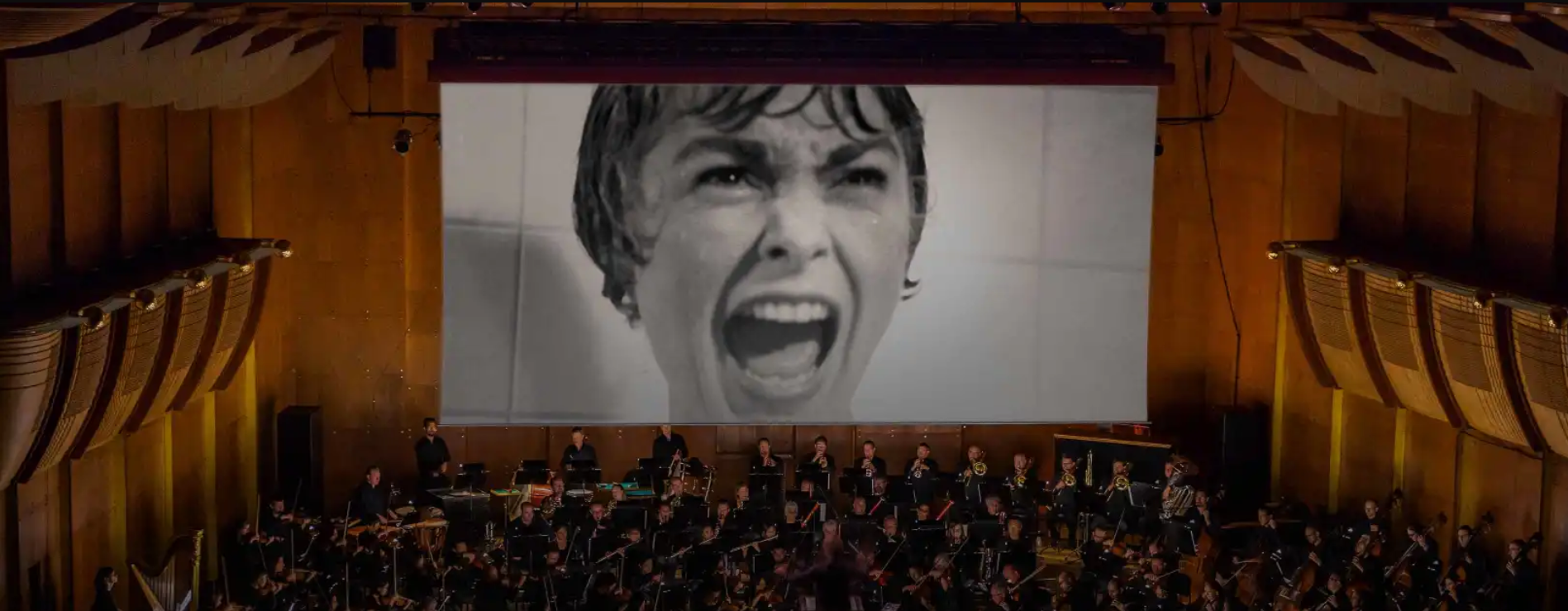EDITORIAL: Hearing Fear: Why Music is Half the Battle in Horror Movies
Hearing Fear: Why Music is Half the Battle in Horror Films
Horror films rely heavily on sound and music to set the tone. The film score and soundtrack of a horror movie can make or break its capacity to strike fear into the hearts of audiences.
Science of Fear
An episode of No Film School’s “It's Okay to Be Smart” suggests that the way we process sound in a more granular manner than sight stems from early human evolution. In the wild, our highly visceral response to sound helped us to detect and defend against predators. This is probably why the haunting score from Jaws composed by John Williams was very effective in convincing the world that sharks are out to get us. This terrifying bit of music gave Williams the first of his 22 Grammy Awards and the second of his five Oscars.
At the time Jaws was released, William’s orchestra approach was considered unconventional since most of the horror studios have shifted away from orchestra music since World War II. But the gamble paid off, as the iconic main theme perfectly matched the looming approach of a great white shark. This effective use of orchestra instruments in horror can also be heard in Stephen King’s The Shining which in addition used actual recordings of animals screaming to up the ante.
The Art of Uneasiness
The catharsis of a horror film—the death of an antagonist or the sudden revival of a monster—is nothing without the protracted, eerie build up throughout a film. You can hear this in the unnervingly morbid and minor dirges composed by Tyler Bates featured in films like Rob Zombie's The Devil's Rejects, James Gunn's Slither, and Zack Snyder's Dawn of the Dead.
Former Marilyn Manson guitarist Tyler Bates has worked on projects like The Exorcist series on Fox and Rob Zombie’s Halloween films. Bates credits two things in his work as a horror film scorer: spending his childhood years living in a haunted house, and his undying love for effects pedals. While the former provides him tons of inspiration for his work, it’s the pedals that have helped him shape the eerie sounds and unexpected riffs that have defined his film scoring career. His favorites include Earthquake Devices’ Rainbow Machine and the DigiTech Whammy, which are featured prominently in his work. His reverberating scores combined with masterfully timed pauses force the audience’s imagination to fill in what’s missing from the scene – striking fear from within.
Narrating Dread
For any film score to be effective, it must function as a wordless narrator that helps the director tell the whole story. More than just background music, horror music is a device that sets the stage for dread, even when accompanied by colorful or hopeful visuals.
The way Netflix’s TV series Stranger Things pays homage to the synthesizer phase of 80s horror is a perfect example. Composers Kyle Dixon and Michael Stein achieved the show’s infectiously retro score by using Roland’s Juno-106, Korg’s Mono/Poly, the ARP Odyssey, and the Sequential Circuits Prophet, a mainstay in the work of legendary director John Carpenter.
Speaking of legendary, the iconic slashing violin stingers from Alfred Hitchcock’s Psycho demonstrates how award-winning musician Bernard Herrmann masterfully plays with movie-goers’ sense of comfort. To this day, the squealing strings in the movie’s infamous shower scene evokes fear in a new generation of film fans.
Another notable collaboration between Herrmann and Hitchcock is the narrative scoring in Vertigo, which hooked viewers into the repetitive pattern of romantic obsession which the movie encapsulates. It enabled the protagonist to seamlessly transform in front of the audience’s eyes forcing viewers to relate to but also be repulsed by the changes in the character.
Music matters in horror arguably more than it does in any other film genre. If you want to get over a movie that traumatized you in the past, try watching it with the sound muted. But if you want to keep the fear alive, brace yourself and turn the volume all the way up. This effect also works with horror books and listening to someone read you a story heightens the fear. If you usually read your horror try listening to some of these on audiobook.
LOGO DESIGNED BY MEENTS ILLUSTRATED



